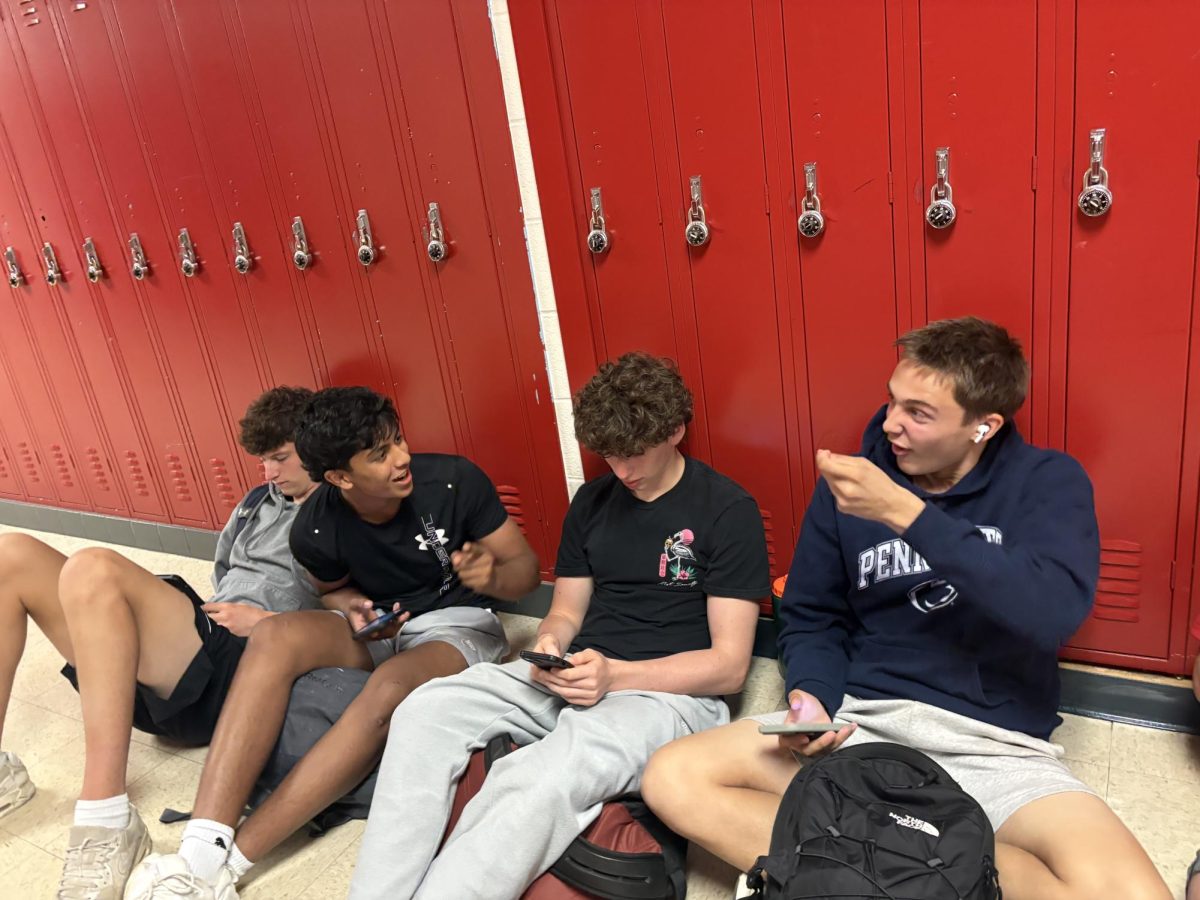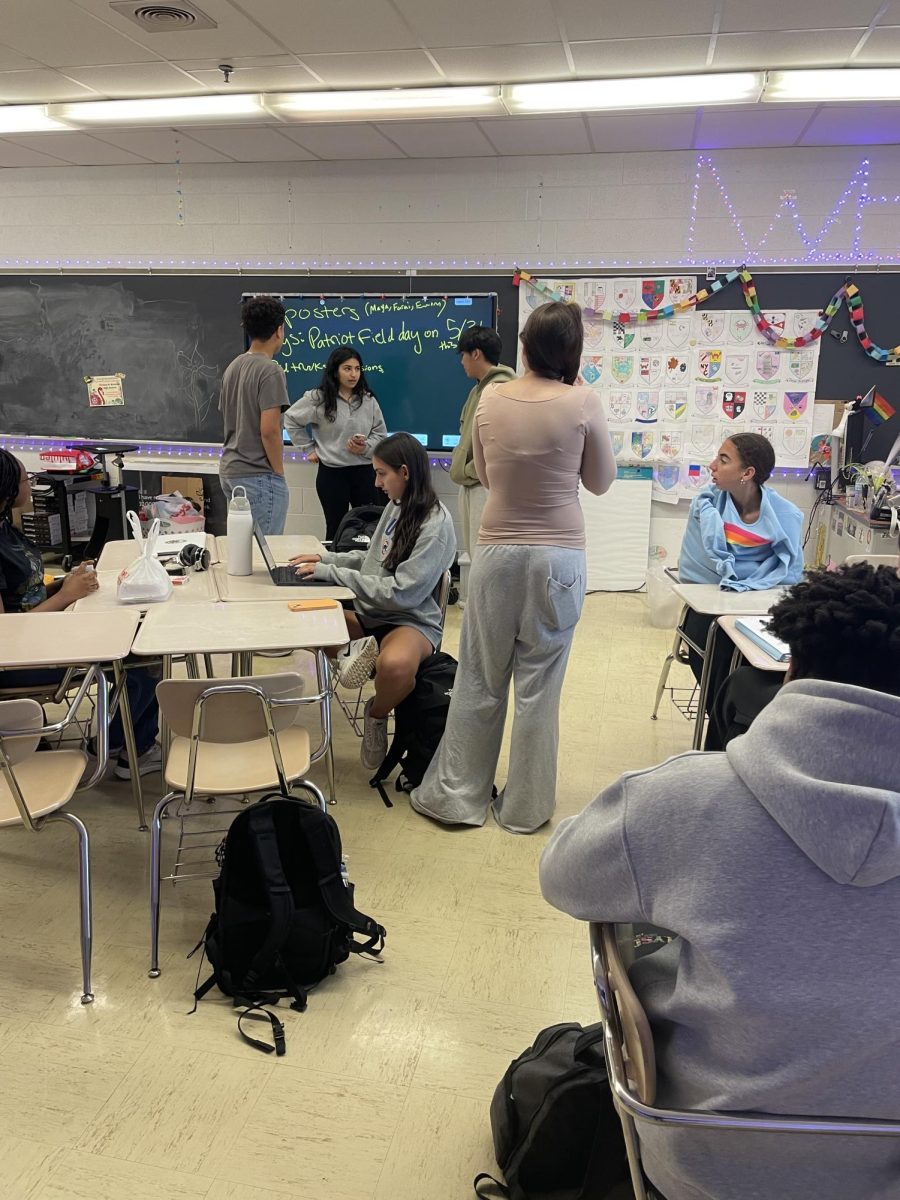Extracurricular activities might be a trigger word for seniors; most can summarize the majority of their extracurriculars in 150 words or less, as the Common Application requires it. Extracurricular activities might be a trigger word for juniors; with standardized tests and the most important year of their high school careers, how can they make the time for it all? Extracurricular activities might be a trigger word for freshmen; how do you know which ones to sign up for and how many activities is too many? Sophomores, 10th grade is irrelevant. Sorry.
Despite the hassles and questions that extracurricular activities might pose, there is an abundance of benefits to participating in clubs and on athletic teams in moderation– a sense of community is created, they can be fun and it’s a great way to meet new people. Another pro is that participating in a club or two is typically related to higher test scores and GPAs, according to a study conducted by The National Center for Education Statistics (NCES) in 1992.
Taking this into account, it makes sense that people score so highly here, as well as at the other “W” high schools–Winston Churchill, Walter Johnson and Whitman. The emphasis on a holistic education may be stressful for students, but evidently has a sizable impact on grades as well as attendance and overall wellbeing. Students are required to get a certain grade point average (GPA) in order to be able to play for sports teams at school, and not doing so results in a ban from playing or practicing. In general, “students who participated [in extracurriculars] were three times as likely to perform in the top quartile” and “about 17 percent more likely to aspire to higher education,” NCES said. In addition, participants in these activities were almost three times more likely to have a GPA of a 3.0 or above.
From a young age, extracurricular activities like art clubs or music classes or athletic teams contribute to the formation of neural connections, abstract thinking, concentration, motor skills and memory skills. Extracurricular activities also promote good mental health. Surrounded by positive leadership and positive peers in a structured activity, students’ success seems to flourish. Their self-esteem often improves as well as their sense of belongingness and community, which essentially keeps them engaged in school and prevents them from dropping out.
A large problem that lies with extracurricular activities is the disparity between students from affluent families who participate fairly often, compared to students from less affluent families who do not. Why this is, is not completely clear– students from both affluent and less affluent schools reported around a 95 percent availability of activities, so it is not as if these clubs are inaccessible or extremely selective.
We can surmise why students from lower income families are less likely to participate of course: after school activities can be expensive and working parents can be unavailable to cater to their children’s after-school needs. Parents who work jobs with unpredictable schedules cannot promise their children that they will be able to drive them to or from their activities. This leads to these students not participating at all but rather watching TV at home alone or getting involved in unproductive activities that don’t enhance their lives in any way.
There is no question that the price of activities has gone up. If one tallies up expenses for a sport or club, the numbers often reach the hundreds… something that is not sustainable for a family living paycheck to paycheck. Sports teams often require “mandatory” warm up shirts that players have designed so that the whole team can match. Not a bad idea, but surely not a cheap one either. There shouldn’t have to be a choice between enriching activities like sports and basic necessities like food, but the fact is that there is.
It’s a continuous cycle that seems to be impossible to break. Those who cannot pay the expenses continue to suffer the consequences, which include the activity gap, the achievement gap and the income gap– all things that could be solved with investment loans from wealthier individuals. If we were to put a little money and faith into lower income families and give them the same resources that higher income families have, there’s a good chance they could begin to function as higher-paid members of society– ones that would be able to fund their own children’s lives. By breaking the cycle of the activity gap, we could arguably end the achievement gap, which, as a result, would end the income gap.
As I polled 100 random students around the school asking why they participated in after-school activities, the answers ranged from “I like them” to “my parents force me.” The results of this poll are below:
Almost half of those polled said that they do extracurricular activities mainly for their college applications. Only 36 percent said that they participate because they actually like the activity.
Although this may seem depressing–people doing things just for recognition’s sake–what is more depressing is that students from wealthier families take for granted the fact that they can even afford to participate at all. Countless times I’ve complained about having to attend sports practices or club meetings, but never have I thought about how privileged I am to be able to have those kind of “annoyances” hanging over my head.
From the beginning of my life, my parents worked to give me the best opportunities that they could, and if not for this, I don’t know where I’d be. As I talked with my friends during lunch about this one day, we all came to the same conclusion: If we had not been enrolled in preschool prior to attending kindergarten, we would have been dreadfully unprepared for our first “real” year of school. We rehashed our first day of preschool stories, and there were some huge similarities, one being that we all cried in the moments that our parents left us.
Arguing the fact that preschool is the equivalent to an extracurricular activity but for four year-olds, imagine this: your family cannot afford to send you to a preschool. So on the first day of kindergarten, you are dropped off and cling to your mother or father for dear life, much like the kids who’d been preschooled did the year before. It’s not fair– you’re going into kindergarten crying and all these other kids know the drill– carpool lane drop-off, find friends, and walk to class with lunch in hand and backpack on (two-strapping it, of course). These kids have been acclimated to this school environment already, and you have not. You’re labeled as a crybaby and in class you struggle with the work and being able to concentrate. You begin your school career already at a disadvantage. This gap continues to widen.
“In 2014, the overall percentage of three to five-year-olds enrolled in preschool programs was higher for children whose parents had a graduate or professional degree (49 percent), as compared to those whose parents had a bachelor’s degree (43 percent), an associate’s degree (38 percent), some college (35 percent), a high school credential (32 percent), and less than a high school credential (28 percent)” the NCES said.
It’s a tired pattern we see here, the gap between the rich and the poor– the educated and the uneducated. We need a Robin Hood who can level the playing field and close the achievement gap, but it’s not clear who will step up to do the job. It looks like this will be one more issue our generation will need to fix.
Julia Gastwirth
Managing Editor








